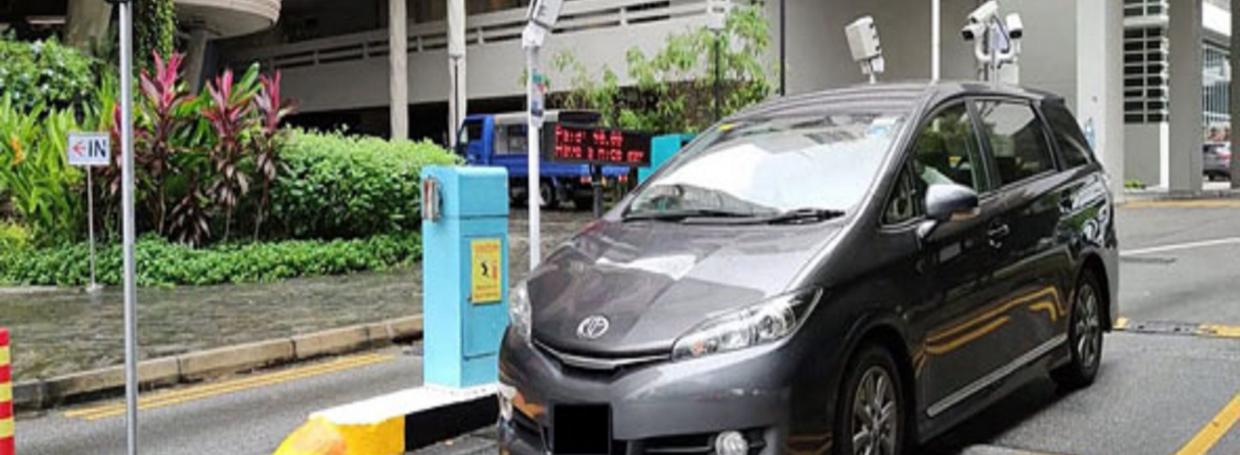Singapore Car Parks | 4 Technologies of the Smart Carpark System

How Smart Technologies are Revolutionizing Car Parks in Singapore
Photo credit: IMC Newsdesk
Reading time: 3 mins
In a densely populated city like Singapore, the availability of parking spaces is often less than the number of vehicles on the road. As demand for parking spaces continues to increase, smart and automated parking systems are being integrated to help ease congestion and keep drivers informed of parking information using digital software on mobile devices.
These smart parking solutions consist of a range of technologies designed to help drivers locate vacant car park lots, as well as access and exit car park facilities using remote payment methods.
In short, besides alleviating congestion in and around car parks, ultimately the Smart Car Park system saves drivers time and, in some cases, money. In other words, it makes parking less of a hassle.
Additional benefits include the potential to capture real-time behavioural data and use of that data to design long-term solutions for parking, as the technology becomes fully integrated into our smart city.
But do you know exactly what Singapore’s smart parking technology consists of and how it works? This article focusses on the 4 main technologies of the automated and barrier-free car parks – introduced in Singapore in recent years – and their applications, as part of the Smart Car Park System.
What is the Smart Carpark System?
Thanks to the Internet of Things (IoT) and sensor technology, this parking system allows real-time data to be obtained about parking availability at a particular facility as well as updates on traffic and road conditions.
On one hand, there’s the deployment of sensors and/or cameras, which record and process data and images to provide real-time parking occupancy information.
And on the other hand, the use of a cloud-based system allows these various devices and components to be connected and the data to be centralised. The data is then analysed in order to calculate the availability of open space parking facilities, or parking spots in HDB carparks and covered private parking facilities.
The 4 Main Technologies and Implementation of the Smart Car Park System
1. Parking Guidance and Information System (PGIS)
The PGIS encompasses two things:
- It aids the decision making process of drivers in reaching their parking destination.
- It helps them in locating a vacant parking space within the car park facility.
It’s able to assist drivers to a car park and pinpoint the available parking spaces via the information occupancy status. It gives a visual output, as shown in the image above, indicating how many parking spaces are available within the facility and specifically which lots are available. Basically, the LED lights fitted above each parking spot turns green if it’s vacant and red if occupied.
2. Transit-Based Information System
Similar to the PGIS, the transit-based information system provides real-time information to aid drivers to their desired parking destination. It does this by providing information on public transportation such as bus schedules and traffic conditions.
The additional information provided, enables drivers to plan for transit in advance without getting into any inconvenience along the way.
3. Smart Payment System
As the name suggests, this component within the Smart Carpark System is implemented in the effort to overcome the limitation of the conventional payment method via parking meter.
With the introduction of new technologies, the smart payment system consists of 2 methods:
| Payment Method | How it Works | Outcome |
| Contact Method | Involves the use of the In-Vehicle Unit (IU) and NETS CashCard for processing parking fee payments | Known to cause delay and inconvenience for drivers as they have to deal with cash. |
| Contactless Method | involves the use of mobile devices as well as the Automated Vehicle Identification (AVI) tag that utilises RFID (radio frequency identification) technologies | Allows for remote payment and a frictionless checkout. |
4. Automated Parking
The automated parking component or what is known as the “Tower Parking System” in Singapore involves the use of a computer controlled mechanism, which allows car owners to drive up to the bay, lock their cars and let the machines automatically place the vehicle in the allocated parking space.
This mechanised car parking system has three key benefits:
- It uses land more efficiently and allows for more parking lots than a multi-storey or open space carpark.
- It allows parking spaces to be created in areas with site constraints, including building them on existing car park lots.
- It’s more aesthetically pleasing than having multiple gantry car parks around the city.
Currently the Tower Parking System is established at Bangkit Road, Yishun Avenue 4, the car park at Changi Village Road, and a few commercial buildings in Singapore’s Central Business District.
Smart Car Parks Are the Way of the Future
As more and more cars hit the road, there’s a need for better parking solutions. One way to address the issue is with the Smart Car Park System. Of course, in order to reduce parking-related congestion and air pollution, public transportation such as buses and the MRTs are good options to get around. However, private vehicles are still used for convenience so a deep-rooted solution is needed for the future.
And as with most matters in today’s modern world, technology is likely to play a significant part in this journey. There’s no doubt that we’ll see an increase in the implementation of the Smart Car Park System, and probably other new concepts that could make parking a breeze in Singapore.
Do you prefer Singapore’s Smart Car Park System? Or are you used to barrier parking? Let us know in the comments below. To read more informative articles like this, visit DirectAsia’s official blog page. DirectAsia is Singapore’s only insurer with NCD60 that offers flexible car insurance customized to your needs.